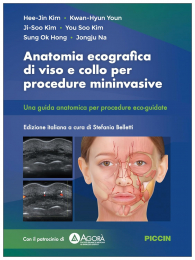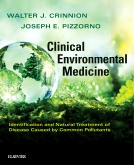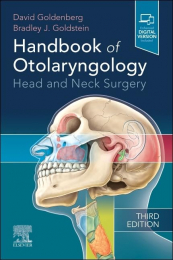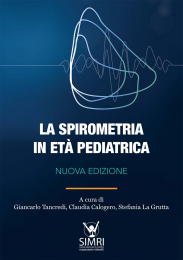Non ci sono recensioni
DA SCONTARE
|
Did you know that high levels of toxins in the human body can be linked to common conditions such as infertility, obesity, rheumatoid arthritis, heart disease, and diabetes? With therapeutic guidance designed for clinicians, Clinical Environmental Medicine focuses on how toxins such as arsenic, lead, mercury and organophosphates have become one of the leading causes of chronic disease in the industrial world. The first edition of this text describes how to treat these undesirable elements and molecules that can poison enzyme systems, damage DNA, increase inflammation and oxidative stress, and damage cell membranes. Expert authors Walter Crinnion and Joseph E. Pizzorno offer practical guidance for assessing both total body load as well as specific toxins. In addition, evidence-based treatment procedures provide recommendations for decreasing toxin exposure and supporting the body’s biotransformation and excretion processes. |
| New To This Edition: |
|
Section I: Introduction to Environmental Medicine
1. The Science of Environmental Medicine
2. Oxidative Damage and Inflammation
3. Food Pollution
4. Water Pollution
5. Indoor Air Pollution
6. Outdoor Air Pollution
7. Health and Beauty Products
8. Drugs
Section II: The Toxicants
Metals
9. Arsenic
10. Cadmium
11. Hexavalent Chromium
12. Cobalt
13. Lead
14. Mercury
15. Other Metals
Inorganic Chemicals
16. Fluoride
Solvents
17. Benzene, Toluene, Ethylbenzene, Xylenes (BTEX)
18. Chlorinated Solvents
19. Styrene
Pesticides
20. Organochlorine Pesticides
21. Organophosphate Pesticides
22. Pyrethroid Pesticides
Herbicides
23. Glyphosate and Petroleum Distallates
24. Chlorophenoxy Herbicides
Plasticizers
25. Bisphenol A
26. Phthalates
Other Persistants
27. Polybrominated Diphenyl Ethers
28. Polychlorinated Biphenyls
29. Perflourocarbons
Preservatives
30. Parabens and Other Preservatives
Airborne
31. Mold and Water-Damaged Building Toxicity
32. Ozone
33. Particulate Matter and Polycyclic Aromatic Hydrocarbons
34. Sulfur and Nitrogen Oxides
Endogenous
35. Endotoxicity
Toxins of Choice
36. Alcohol
37. Marijuana
38. High Fructose Corn Syrup
39. Salt
40. Smoking
41. Wheat
Section III: Systemic Effects of Toxins
42. Neurotoxicity
43. Immunotoxicity
44. Endocrine Toxicity
45. Mitochondrial Toxicity
46. Respiratory Toxicity
47. Cardiovascular Toxicity
48. Musculoskeletal Toxicity
49. Liver Toxicity
50. Renal Toxicity
51. Cancer
Section IV: Assessment of Toxic Load
52. Assessment
53. Laboratory Assessment of Toxicant Levels
54. Conventional Laboratory Tests to Assess Toxic Load
55. 8-Hydroxy-2'-deoxyguanosine and Other Nucleoside Metabolites
Section V: Biotransformation and Excretion
56. Normal Biotransformation
57. Lung Excretion
58. Hair Excretion
59. Breast Milk Excretion
Section VI: Therapeutics
60. Avoidance
61. Sauna
62. Gastrointestinal and Renal Elimination
63. Microbiome
64. Chelation (Oral and IV)
65. Nutritional Supplementation for Environmental Toxins and Toxicants
Ultimi prodotti





